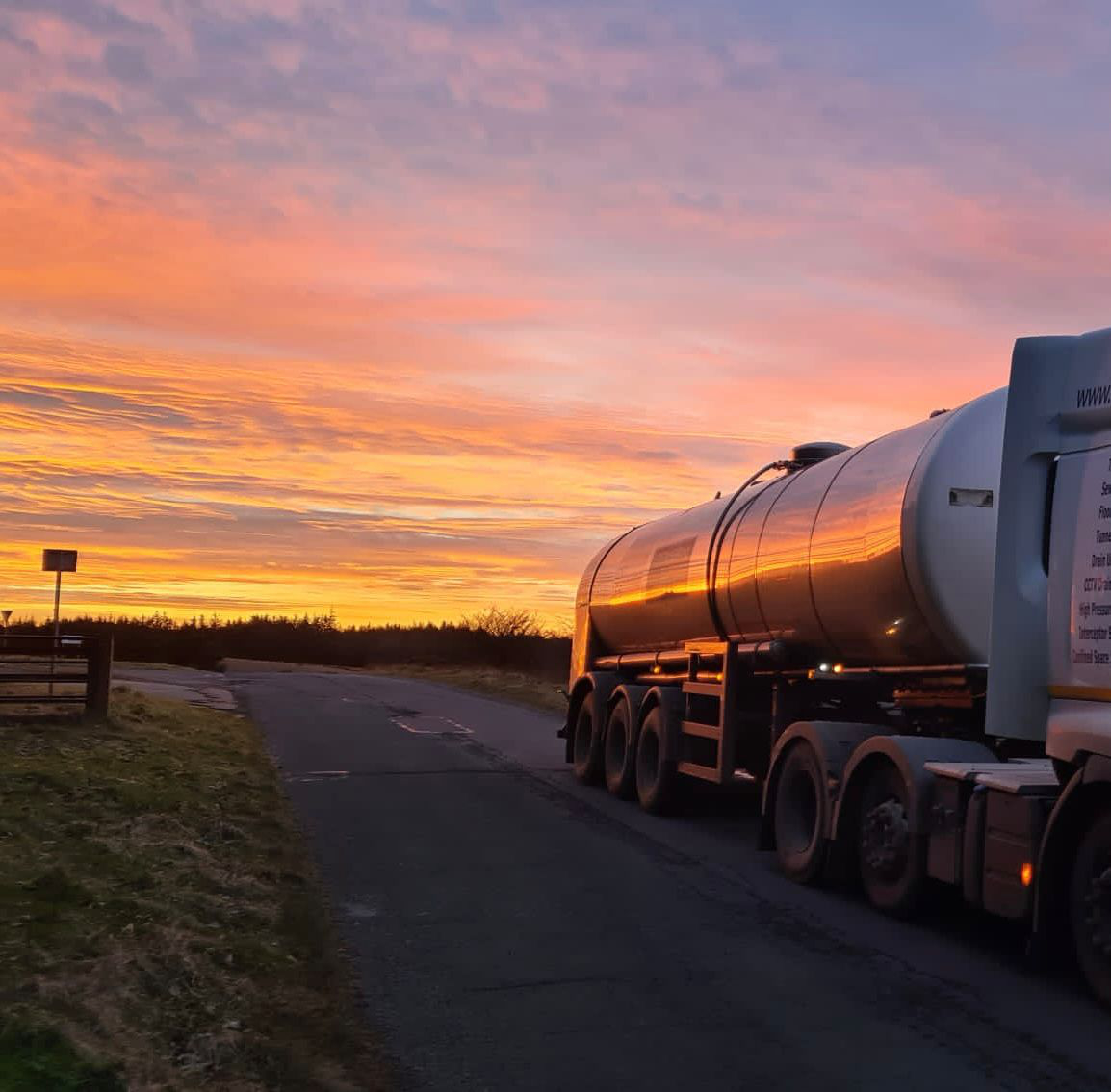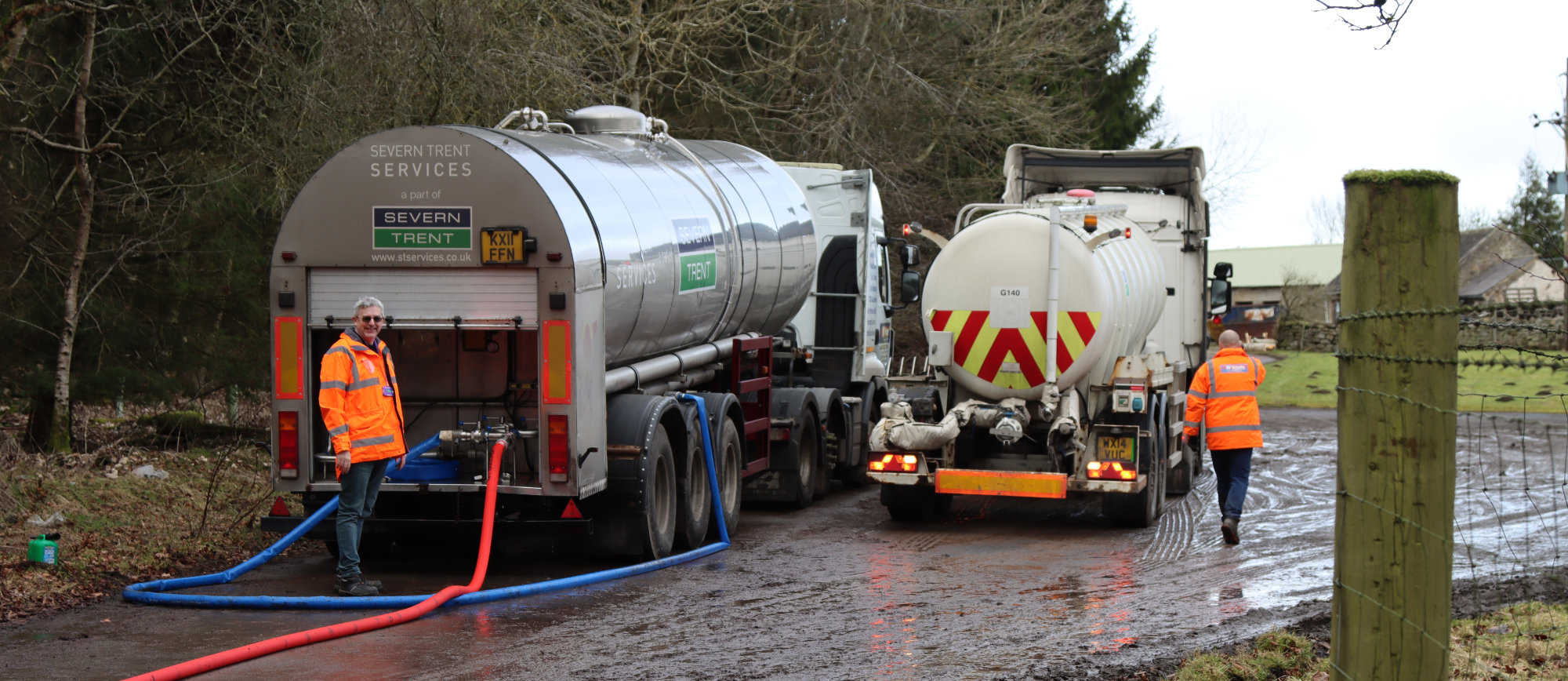
Read how our teams worked around the clock to ensure thousands of properties were unaffected by a burst pipe expelling around 250 cubic metres of water an hour.
This case study refers to a treatment works we manage for a customer that supplies treated water to domestic and commercial properties. Every day our team performs critical activities
to ensure a consistent supply of water 24/7/365.
In February 2023, a large burst resulted in around 250 tonnes of water per hour escaping from a three-mile strategic water supply pipe between two reservoirs.
Despite the burst being located and repaired within three hours, it was so severe that it emptied a large reserve of water held in a balance tank. This water would ordinarily keep the treatment process flowing, so the knock-on effect threatened to jeopardise our ability to produce treated water for a population of around 20,000 people.
And what’s more, with air now trapped within the pipeline, the race was on to bleed the pipes before supplies ran dry.
An incident response team of around 60 water and wastewater experts quickly galvanised and continued to work tirelessly 24/7 over five days.
The initial repair to the pipeline was relatively straightforward and done quickly by our Infrastructure Services teams.
However, extensive work was required to remove the air that had entered the pipeline. It involved tapping and tracing the line – which was over two metres deep – to draw the air out. We did this successfully at one end of the pipeline and restored some of the water supply. We then ran a 1,000-metre above-ground supply from there, right up to the top of the pipeline, to provide an alternative water supply and, in turn, force out the trapped air.
Whilst this fantastic work was being carried out by our Infrastructure Services teams, our Network Logistics teams triggered our alternative supply contingency plans to ensure we maintained supply and minimised disruption.
A potable water tankering operation was launched, which involved tankering water from strategic points directly into the reservoirs supplying our customers. We deployed a series of articulated water tankers – holding between 19,000 and 30,000 litres of water – to guarantee a continuous supply of wholesome water to keep the reservoirs topped up.
Our previous business continuity plans highlighted the importance of maintaining this strategic supply. So, working with our client, we’d already installed fast fill points to the reservoirs to facilitate this efficient tankering operation.
To safeguard the equipment, a water pump that supplies seven of the 20,000 customers had to be strategically isolated during the tankering operation. To overcome this, our clean water tankers were deployed to carry out mains injection techniques as an alternative way to provide a direct potable supply to these customers. By pumping water directly from the tankers into the network, they acted as an artificial reservoir to keep supplies on and avoid a loss of supply.

As a result of our work, water supplies remained unaffected. All assets were repaired, and the treatment works continues to operate optimally today, serving a population of around 20,000.
Our site-specific contingency plans prepared us for this event, allowing us to manage the incident efficiently and successfully.

- Water supply protected for a population of around 20,000
- 60 Severn Trent Services people involved in the resolution
- A 3-mile pipeline repaired within three hours
- A 1,000-metre above-ground supply solution deployed
- 234 tankers of water put back into the network
- 32,000 litres of bottled water distributed as a precaution
- 3.8 million litres of water added to the network to safeguard supplies
- Business continuity contingency planning
- Incident management
- Pipeline reinstatement
- Wastewater assets repair
- Clean water tankering operations
- Communications consultancy









